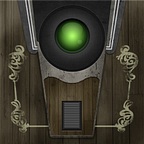AI is here, and it changes everything.
Here’s what you need to know.
Technology exists to ingest the old, integrate it, and give birth to new paradigms. This has been the case ever since our ancestors first learned to wield fire, and has continued on down through the ages, embodying both violence and beauty in this continuous act of consumption and renewal.
The invention of the printing press was one such turning point, the personal computer another, and the Internet a third. We find ourselves in a world on the edge of yet another of these transformations, with widespread public access to AI tools just around the corner.
And, as always happens when human ingenuity gives birth to new technology, society is utterly unprepared for what is about to be unleashed. In this four-part series I’ll bring you up to speed on what’s headed our way with AI, including the potential it holds, the limitations it has, and the flaws you should be aware of. Throughout the series, I’ll use real-world examples from my own explorations of GPT-3 and DALL-E to highlight what’s possible with the technology as it exists today, and what’s currently out of reach.
I’ll cover what’s possible in a co-creative future: co-creative with both AI and with one another, participating in a giant shared creative layer where it just might be possible to learn how to communicate better with one another.
I’ll cover the pitfalls, where AI falls short and training data is biased, where it’s not a panacea but a poison––where it can be weaponized through intentionally malicious training data sets or used to create disinformation in an age that can scarce afford it.
While platforms like OpenAI take pains to avoid contributing to the disinfo epidemic, not all AI platforms have such restrictions, and I’ll talk about what that means in a world of institutional failure, where fake news rules the day and the concept of consensus reality has itself come increasingly under fire.
I’ll cover the ways in which this new technology will impact careers in many different sectors, and how AI tools will affect creative artists in particular.
Finally, I will discuss the ways in which both blockchain technology and copyright reform fit into the overall picture.
It calls into question what constitutes “good” art.
When we can generate something stunning by simply appending “award winning” to the prompt and then calling it a day, it changes a lot of things, and brings a lot of questions immediately to mind.
What does that mean for the person who has spent the better part of their life training to do the same thing by hand?
What does that mean for the uncredited artists whose body of work constitutes the training set of many of these AI tools?
What does this mean for all of us once we inevitably join in and start participating in a co-creative artistic experience, where everything we create is endlessly riffed on, changed, picked apart, remixed, inverted, and ultimately reingested by the very AI models that helped us generate art in the first place?
What does the future look like if this creativity is unlocked for everyone, when those without the privilege or means to go to art school can create art on par with those who can?
What does this mean for creative artists of all stripes, who are about to face an avalanche of competition in an age where discovery is already one of the hardest problems they face?
And yet amidst all these questions, there’s also opportunity. The stage is set for a creative renaissance the likes of which we’ve never seen, and we are about to have the opportunity to co-create on a level that has been previously unheard of.
We can think of tools like DALL-E as our way of interacting with a giant, shared canvas, one that allows people who may never have had a chance to express themselves artistically to do so with the full fidelity of the canvas in their mind’s eye, while also putting art back out into the world to allow others the same opportunity.
And art, in a very real sense, is how we communicate with each other in a way that transcends language and nationality, in a way that tears down old boundaries and demarcations in order to build something new.
Tools like DALL-E allow us to copy art, yes, but they also allow us to view familiar works of art from a different angles, and in a new light.
Everything is a mashup.
Good artists copy, great artists steal.
Nicholas Ptacek is a veteran writer and technologist, with close to 20 years of experience in the cybersecurity industry building award-winning computer security software. His work has been featured extensively in print and news media, including CNNMoney, Macworld, and MacDirectory magazine, along with numerous press appearances in publications including The Information and Vice.
Nicholas has been documenting his journey as he co-creates art with GPT-3 and DALL-E. You can follow his AI experiments on Twitter at: @nptacek
This is essay 1of 4 for 1729 Writers’ 2nd Cohort
